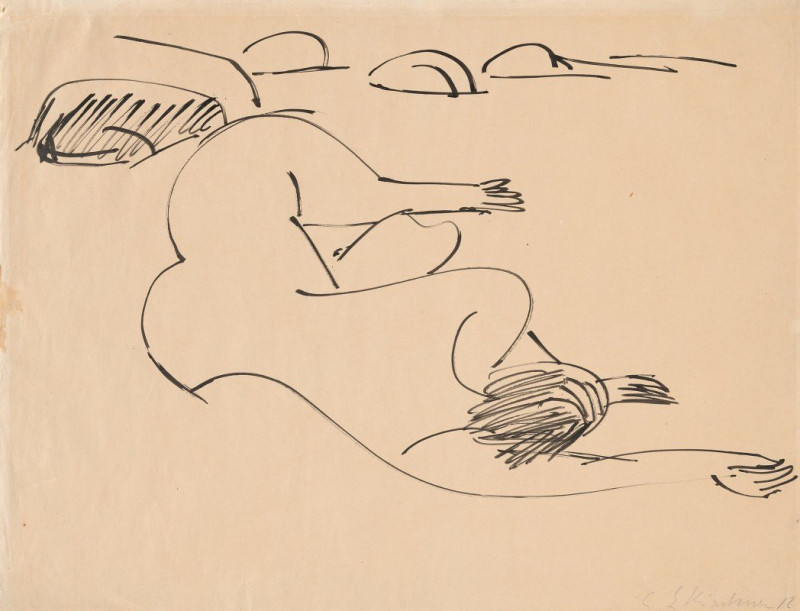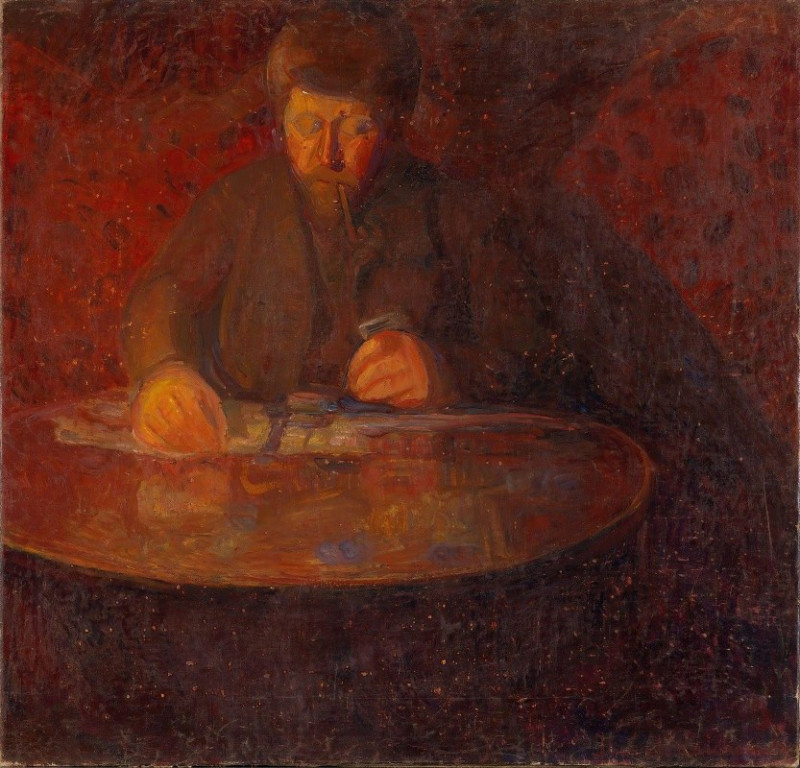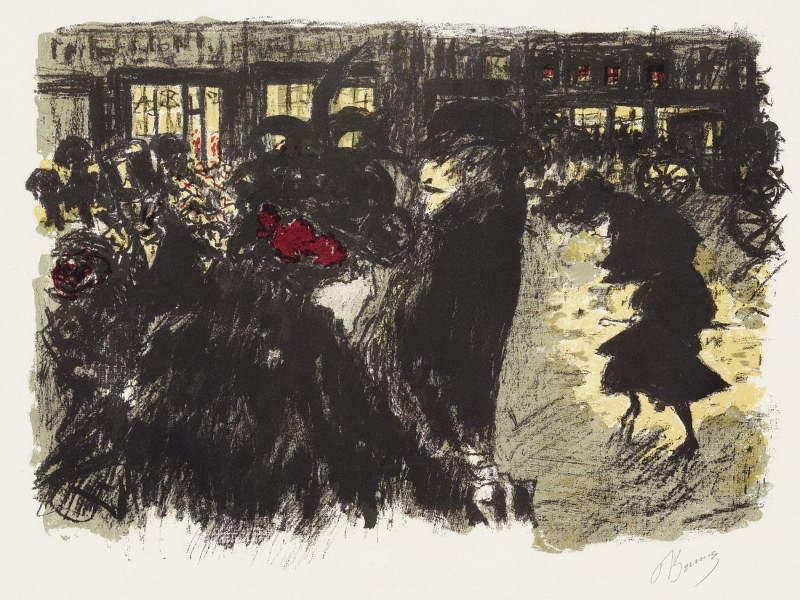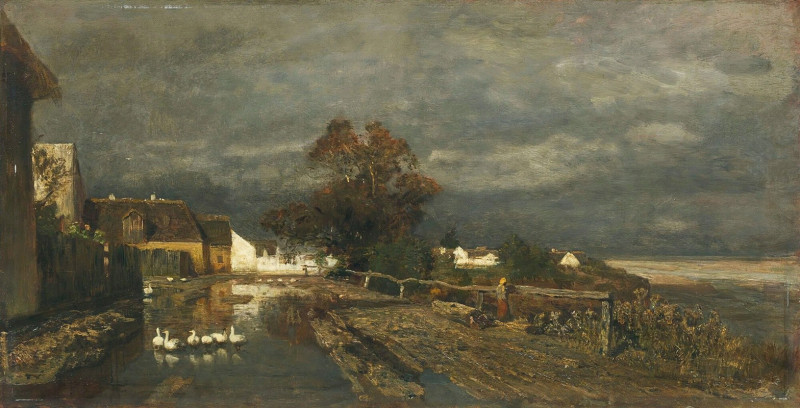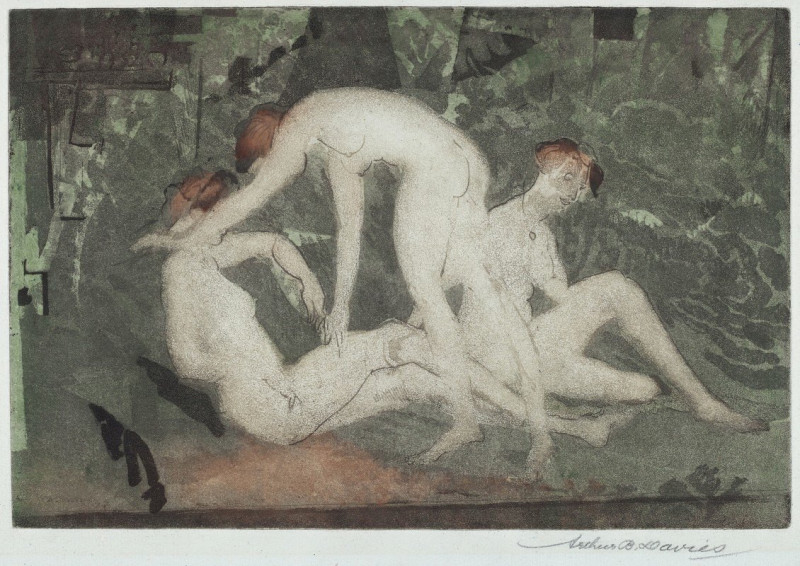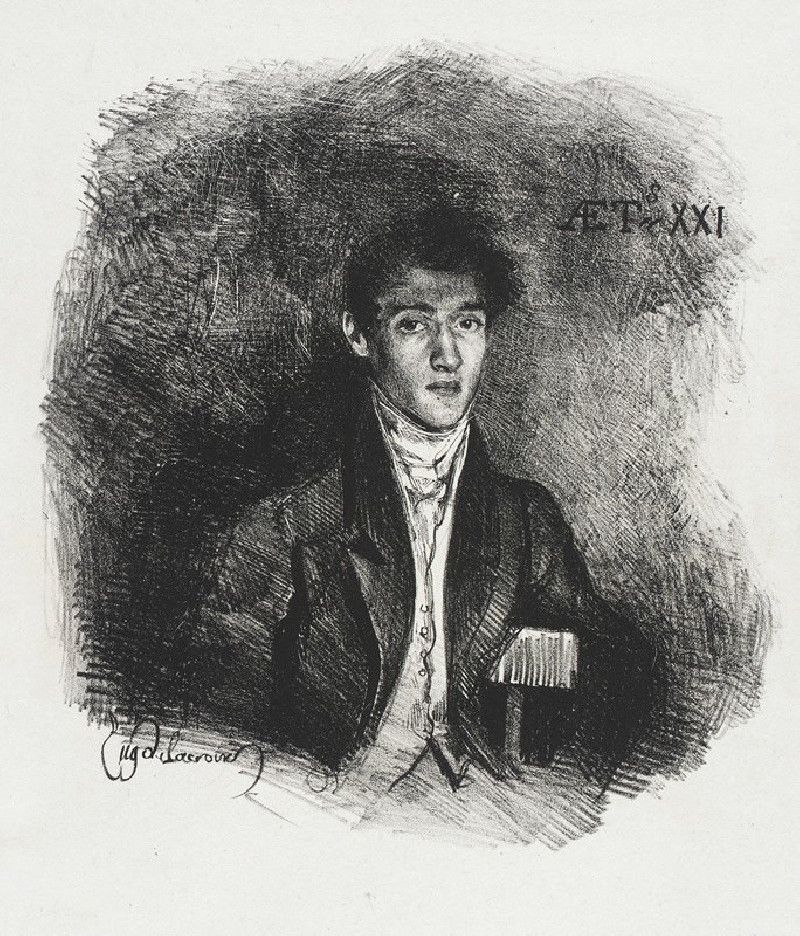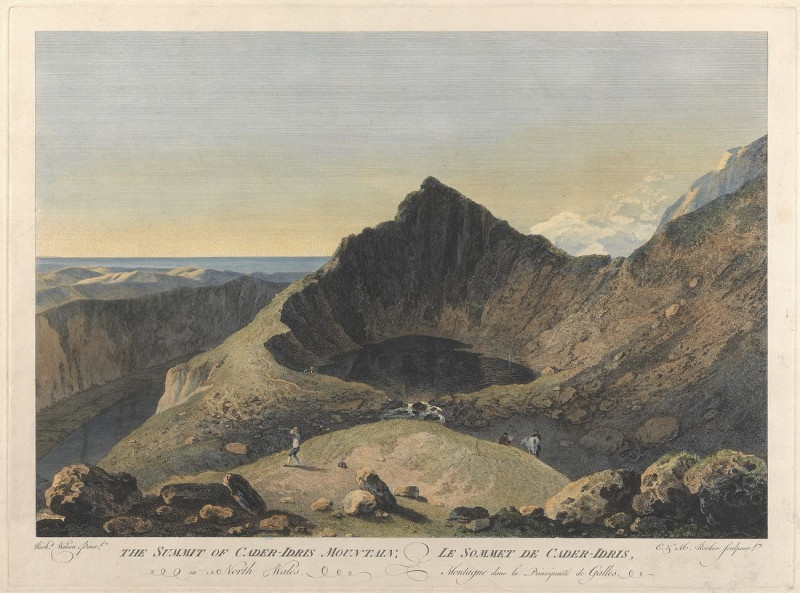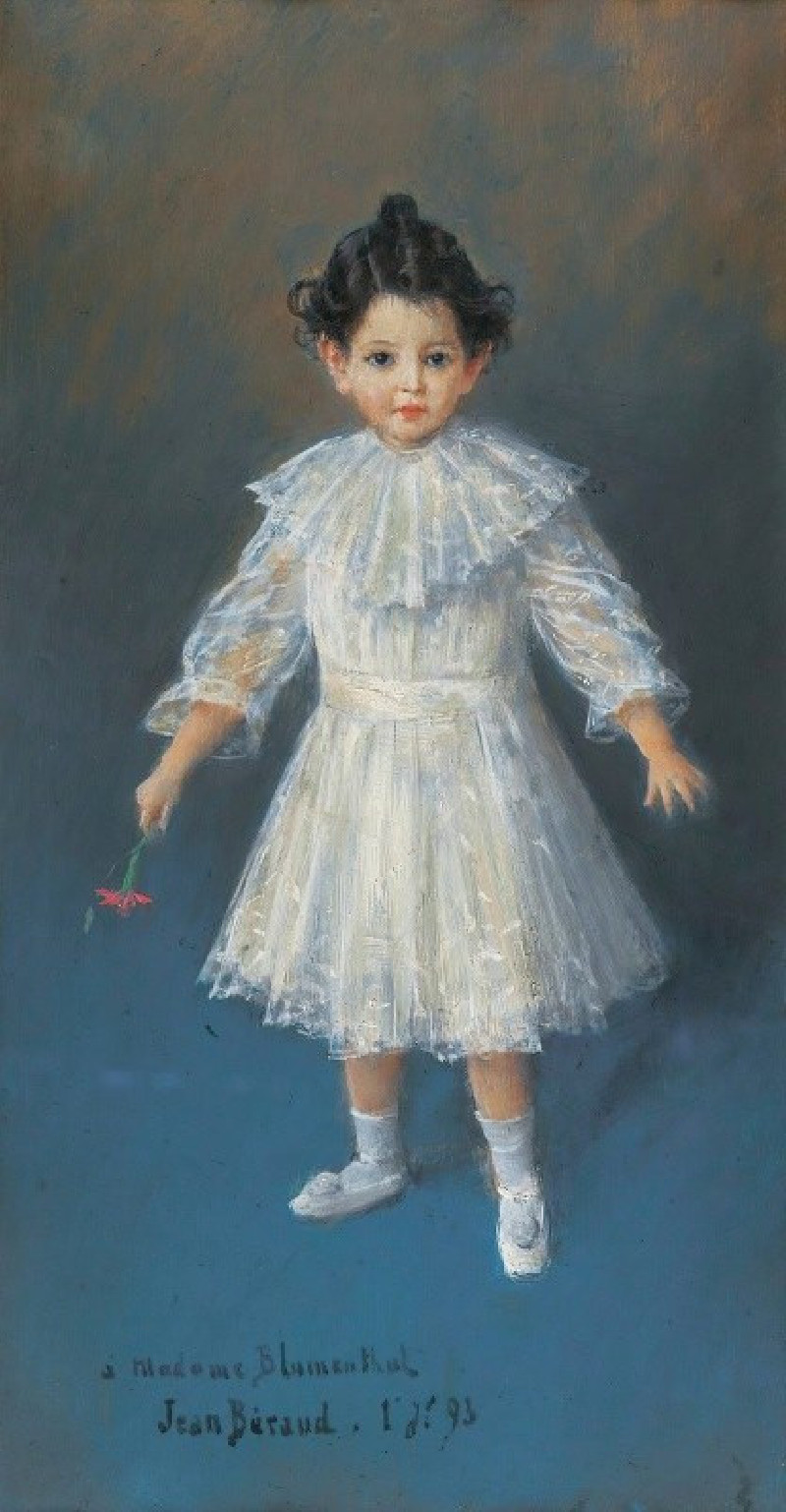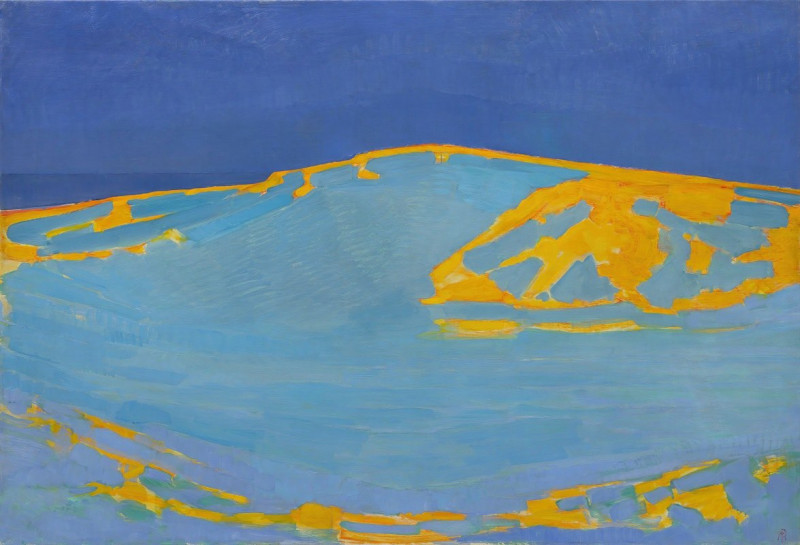Erna Lying on the Beach among Rocks (1912)
Technique: Giclée quality print
Recommended by our customers
More about this artwork
"Erna Lying on the Beach among Rocks," created by Ernst Ludwig Kirchner in 1912, offers a striking example of the artist's expressive gestural style, which played a central role in the formation of the German Expressionist movement. The artwork features a bold line drawing depicting a woman reclining languidly along a rocky seaside. The figure, identified as Erna, Kirchner's frequent muse, is rendered with fluid, sweeping strokes that capture the essence of her form and the relaxed nature of her pose.This particular piece demonstrates Kirchner's ability to abstract the human figure while still maintaining a powerful emotional resonance. Erna's body is simplified and somewhat abstracted, with emphasized curves and minimal detailing, enhancing the focus on her shape and posture rather than her identity. The surrounding environment is suggested with just a few curvilinear lines that intimate rocks and possibly the horizon, creating a minimalist yet evocative setting that mirrors the figure's serene mood."Erna Lying on the Beach among Rocks" is an excellent example of Kirchner's talent in conveying depth and feeling through spare but potent sketches, characterizing a pivotal phase in modern art where emotional expression took precedence over representational accuracy.
Delivery
Returns
Ernst Ludwig Kirchner (1880–1938) was one of the most important German Expressionist painters. He was a co-founder of Die Brücke, a group of German expressionist artists formed in Dresden in 1905. Die Brücke and Kirchner took inspiration from Vincent Van Gogh and Edvard Munch, as well as African and Oceanic art. They used woodblock printing as a medium to showcase their signature style: flat, unrealistic images with vivid colors. The recurring themes in Kirchner's artworks included exotic cultures, faraway landscapes, self-portraits, dancers and Berlin street life. His paintings and prints effectively portrayed non-European cultures despite the fact that he never traveled outside of Europe.

